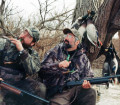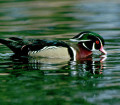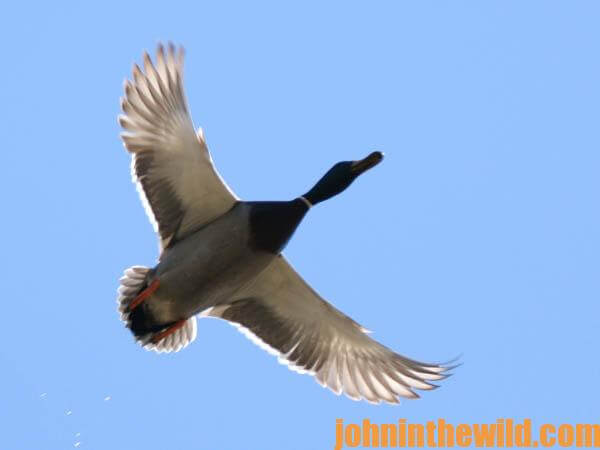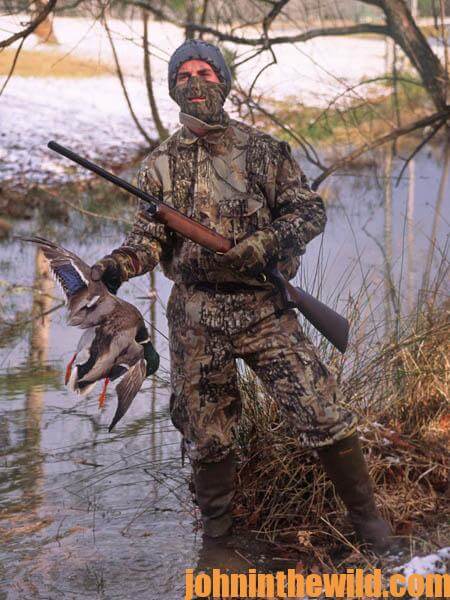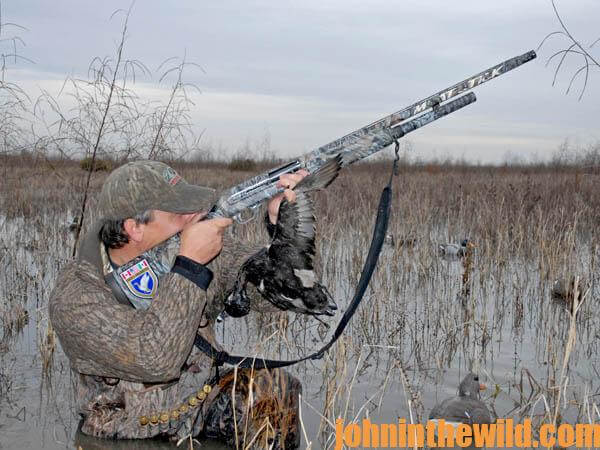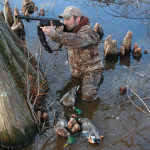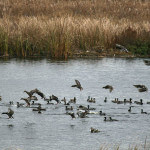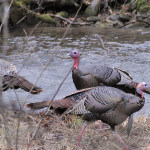John’s Note: I really enjoy classic waterfowling. I like hunting from a blind, using 50 or more decoys, having a retriever pick-up the ducks and sharing the experience with a good hunting buddy. However, classic waterfowling requires too much equipment and doesn’t allow me as much mobility as I have when surprising ducks in flooded timber. Open-water hunting for waterfowl also requires that you live near or travel to big water. Throughout most of the South where I live, you’ll find little potholes and streams, flooded-timber areas and woods ponds where ducks will feed and hold, especially during a cold winter. You can hunt anywhere where you find enough water to float ducks and enough food to feed them. I enjoy hunting ducks. When I make a long stalk to take birds as they come off the water, I feel more satisfied than I do when I put out a decoy spread and blow a duck call, until some feathered phantom gets curious enough to see what’s happening. If you want to enjoy waterfowling without all the hassles, try these surprise tactics to take webfoots.
You can use two strategies to stalk ducks successfully.
If the ducks you hunt feed along a creek or a small river with a high bank, stay behind the bank, until you get close enough for a shot. When you’re prepared to take the shot, sneak over the edge of the bank, and take the ducks as they come off the water. With the second technique, you’ll need more skill and patience. I find this method much more fun than the first. I like to get into the water and stalk a group of feeding or resting ducks that have holed-up in flooded timber. A stalk may last 45 minutes to an hour or more, and the slower you go, the more waterfowl you’ll have the opportunity to take. I try to keep standing trees between the ducks and myself. As long as I know the ducks’ location, I don’t need to see them as I stalk in more closely. Actually I prefer not to see the ducks. If I can see them, then I know they can see me.
I usually wear a head net and gloves or use camo paint on my face and gloves when stalking. I’ve come to believe that the ducks react more to a white face and the movement of white hands than they do to any other type of movement. As long as you remain completely camouflaged, you generally can approach slowly and move in close. I also wear chest-high waders – the kind with a drawstring at the top. Too, I wear a belt around my waist on the outside of the waders. Since many beaver ponds and backwater sloughs contain beaver runs and stump holes that I accidently may step into, my waders may fill with water, which will force me to leave the hunt to warm up and find dry clothes. The belt keeps the water out. Because I like to hunt all day, I carry a pair of lightweight waders with me that have a blow-up tube at the top. I can roll-up these waders, put them in a small day pack with a pair of old tennis shoes and carry them in to duck hunt. After I’ve bagged a limit of waterfowl, I’ll take the tennis shoes and waders off, return them to my backpack and deer hunt or squirrel hunt the rest of the day.
To learn more about preparing ducks and other wild game besides seafood and fish from our family’s recipes from the past 45+ years, get John and Denise Phillips’ new eBook “The Best Wild Game & Seafood Cookbook Ever: 350 Southern Recipes for Deer, Turkey, Fish, Seafood, Small Game and Birds.” Click here to get this book.
About the Author
John Phillips, winner of the 2012 Homer Circle Fishing Award for outstanding fishing writer by the American Sportfishing Association (AMA) and the Professional Outdoor Media Association (POMA), the 2008 Crossbow Communicator of the year and the 2007 Legendary Communicator chosen for induction into the National Fresh Water Hall of Fame, is a freelance writer (over 6,000 magazine articles for about 100 magazines and several thousand newspaper columns published), magazine editor, photographer for print media as well as industry catalogues (over 25,000 photos published), lecturer, outdoor consultant, marketing consultant, book author and daily internet content provider with an overview of the outdoors. Click here for more information and a list of all the books available from John E. Phillips.

